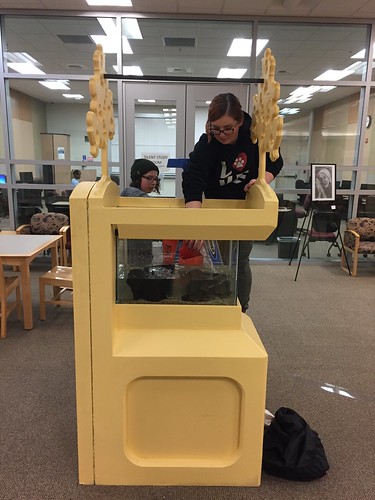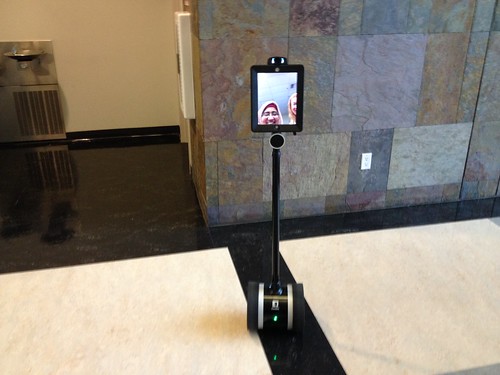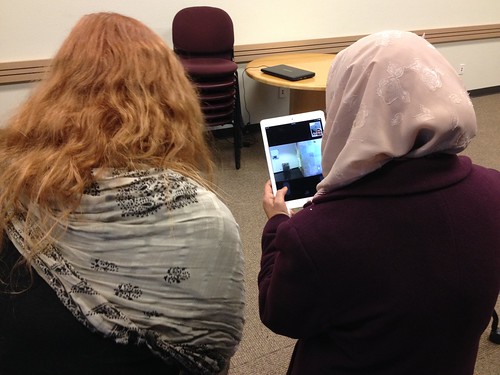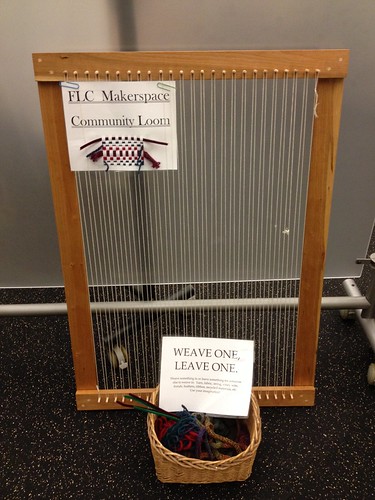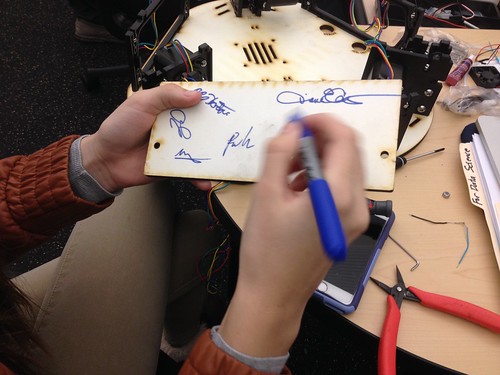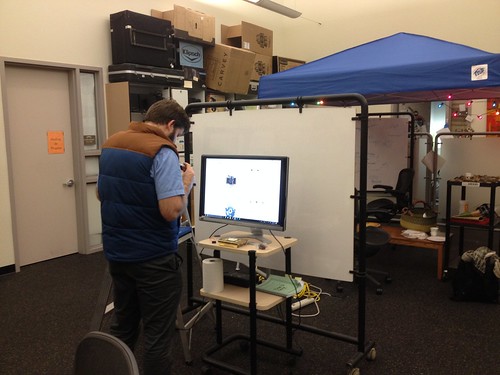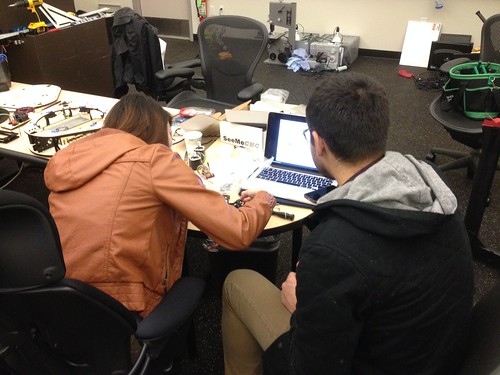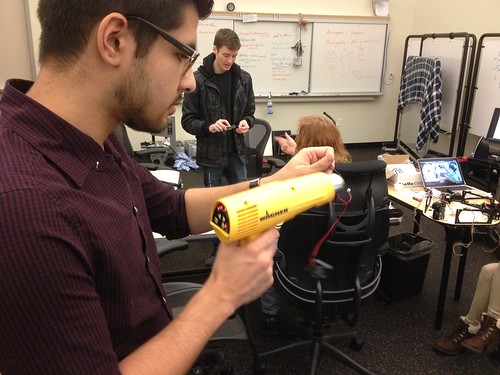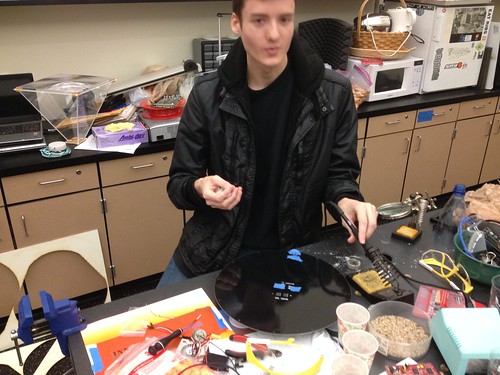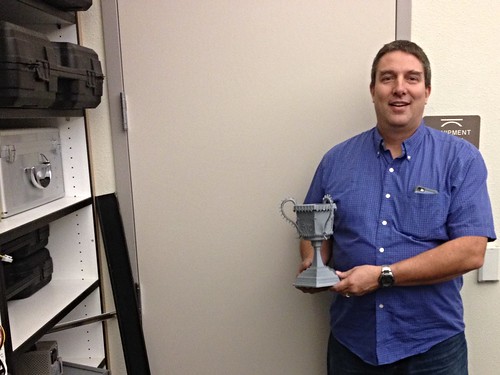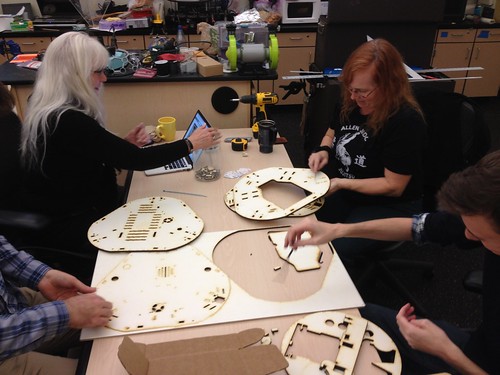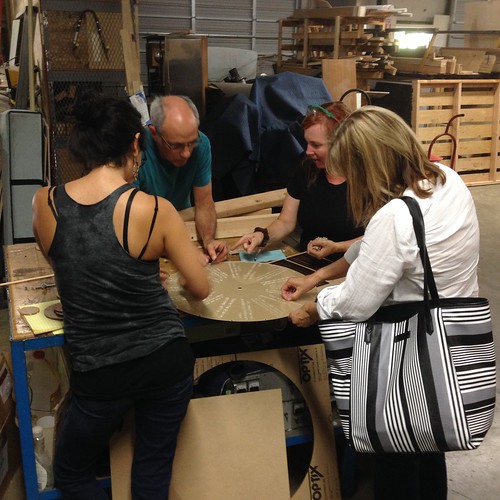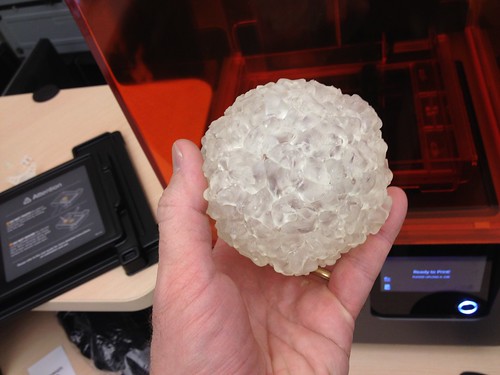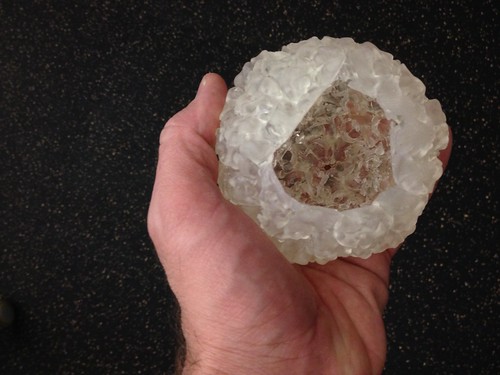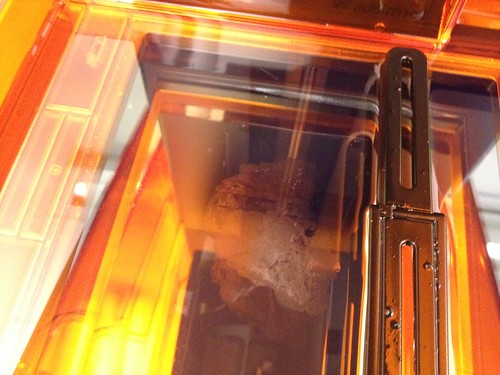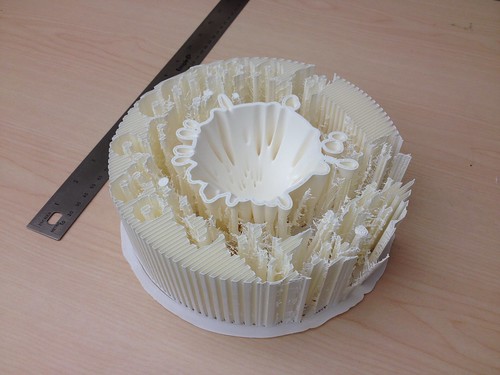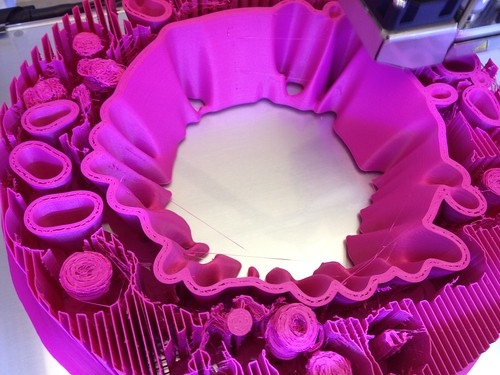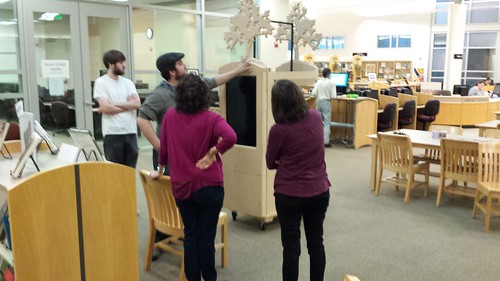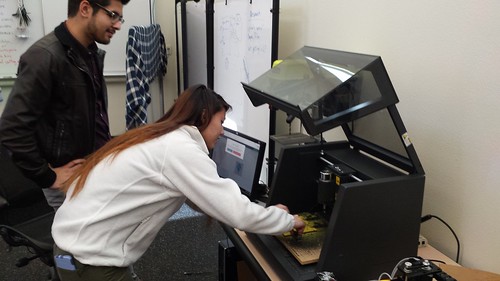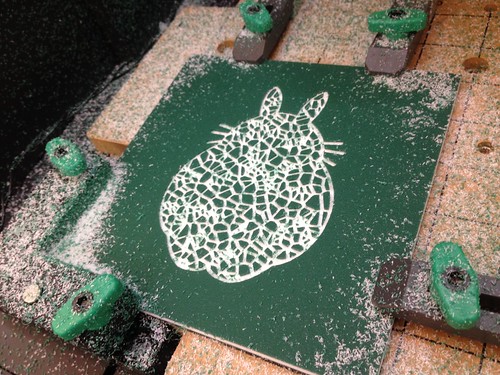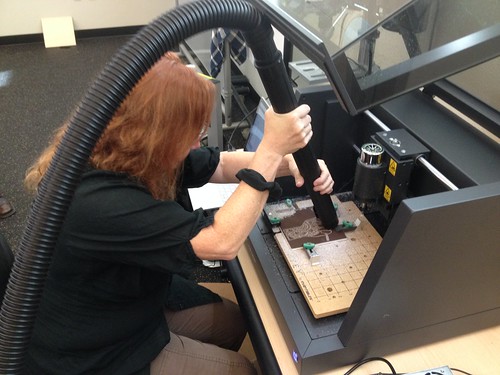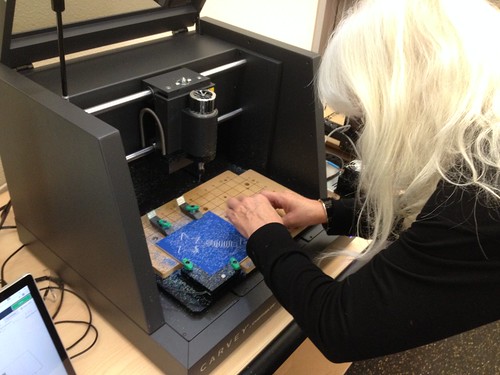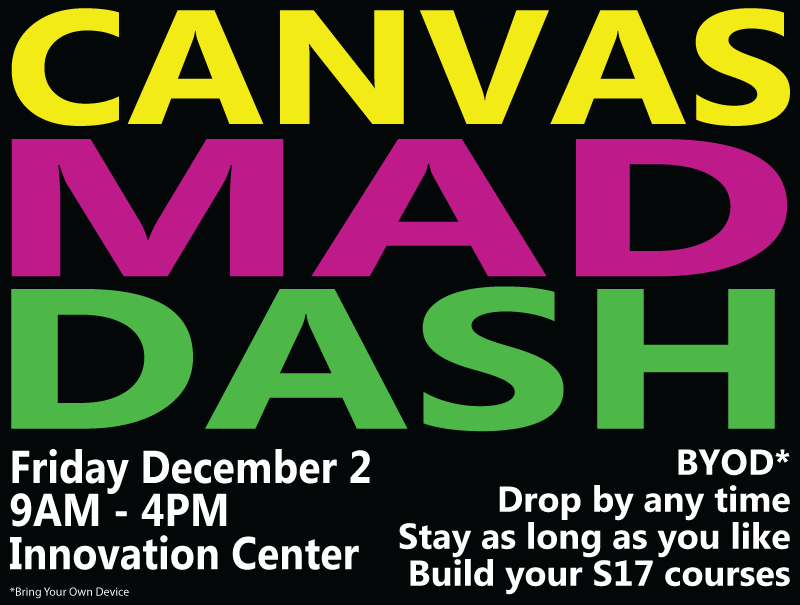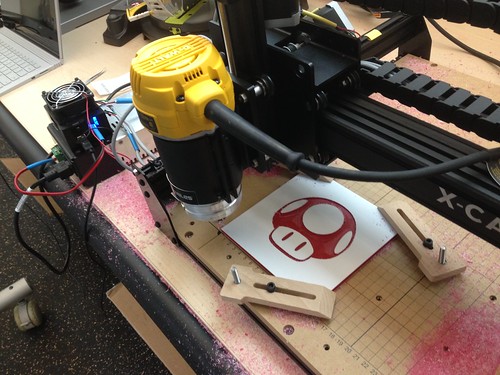Fantastic progress this week on the aquaponics project. The Theater Arts department finished the display, and FLC Maintenance drilled the holes in the raised floor under the unit, pulled the power and Ethernet, and bolted the whole thing to the floor to make it topple-proof. FLC’s Data Science club, spearheaded by Nathaniel Adams (student) and Rebekah Keeley (student) have taken responsibility for the technical implementation, including visual and interaction design, front- and back-end Web development, database work, and getting the Raspberry Pi configured and working with the Arduino, which is doing the data gathering.
Meanwhile Taylor Zenobia (student) and Katie Stackhouse (student) have taken charge of the biological systems, selecting the fish species, and arranging the in-tank decor.
They washed and added the sand, rocks, and plants, then carried the water quite a distance from the Innovation Center to the Library. We’ve got inoculated filter media from the Science Fish (they’re currently living in the IC), which should speed up the tank start-up process. Taylor has been regularly monitoring the water, and once the water chemistry is stable, we’ll look at adding the fish, a few at a time.

